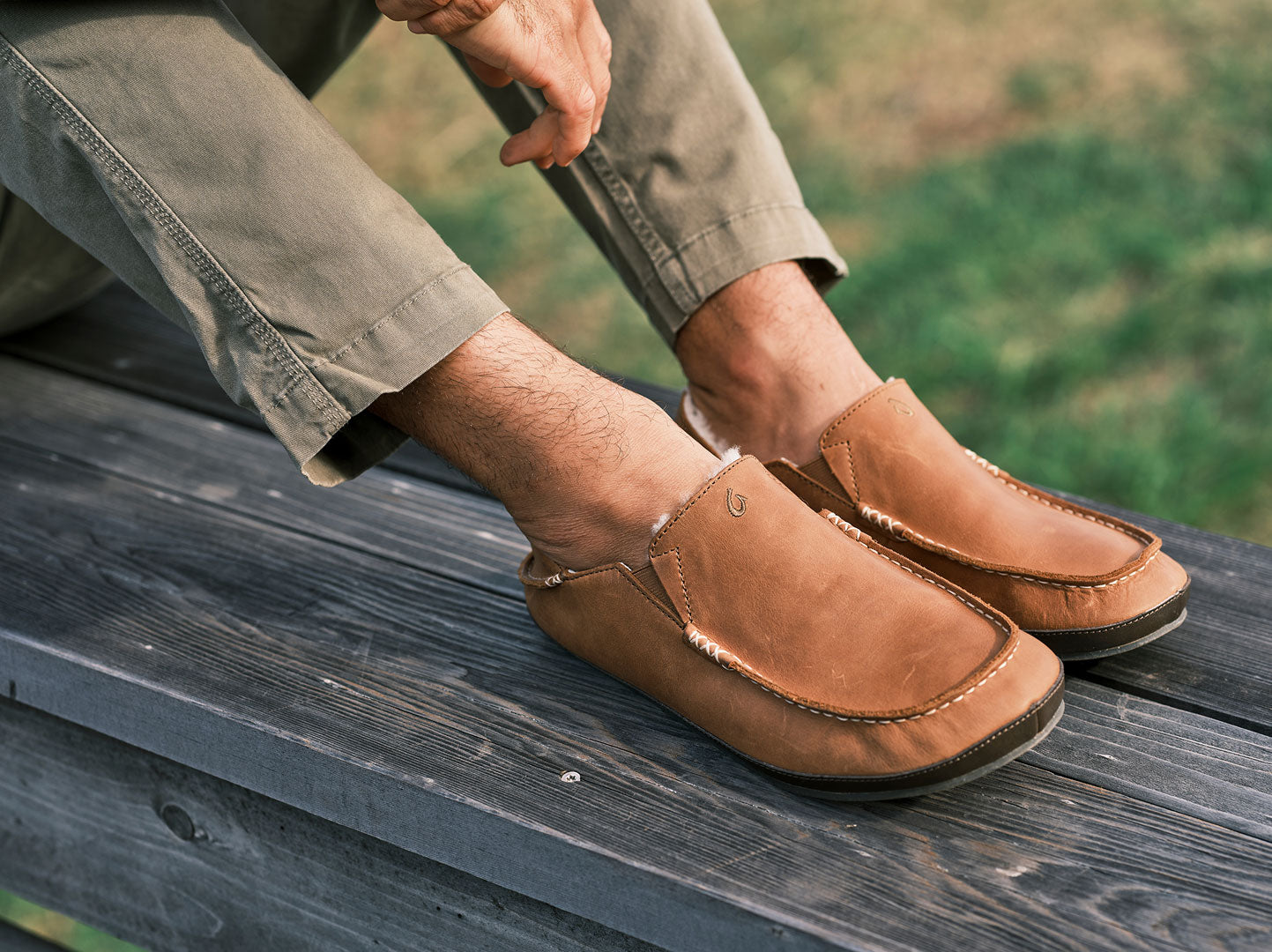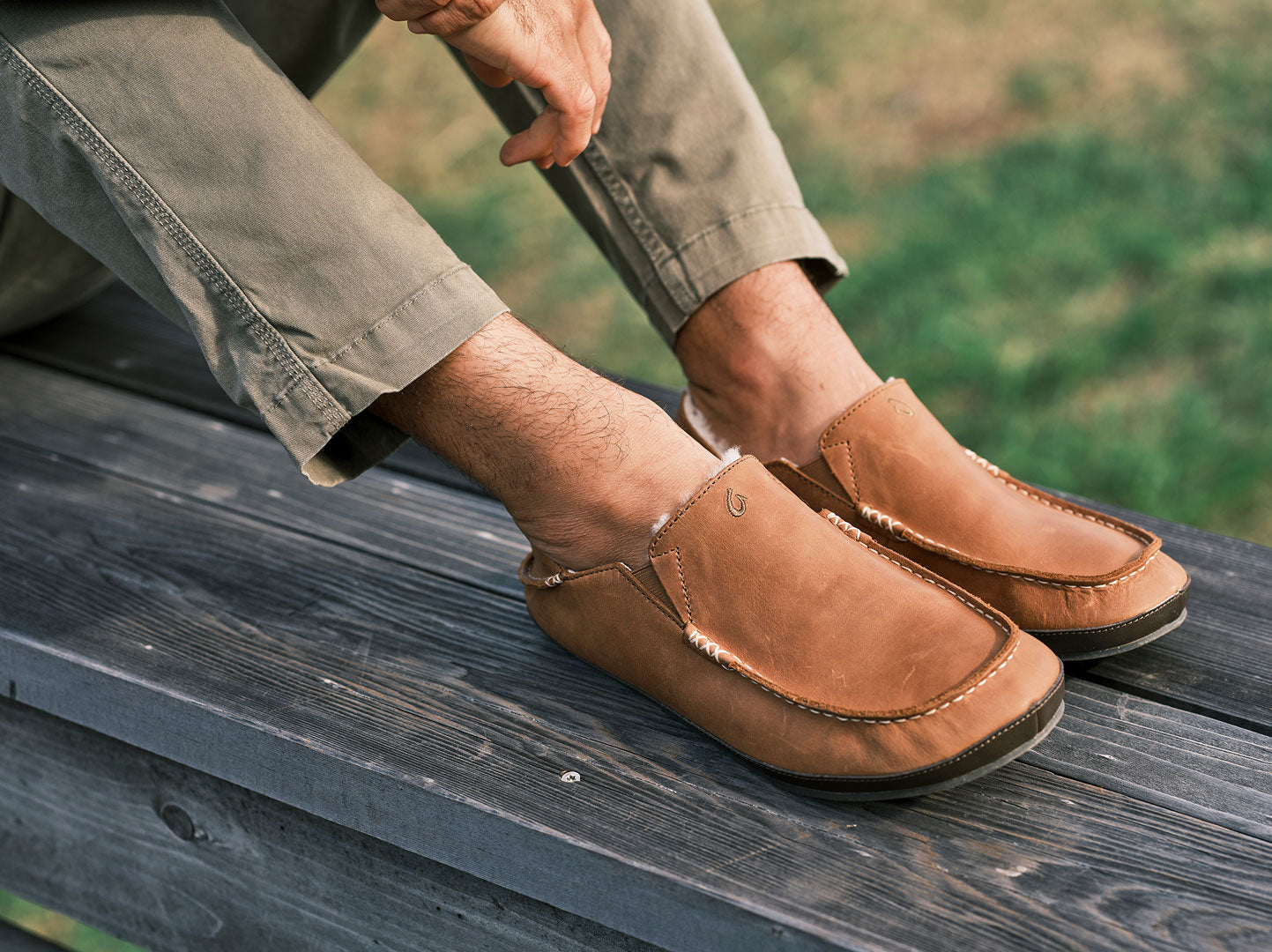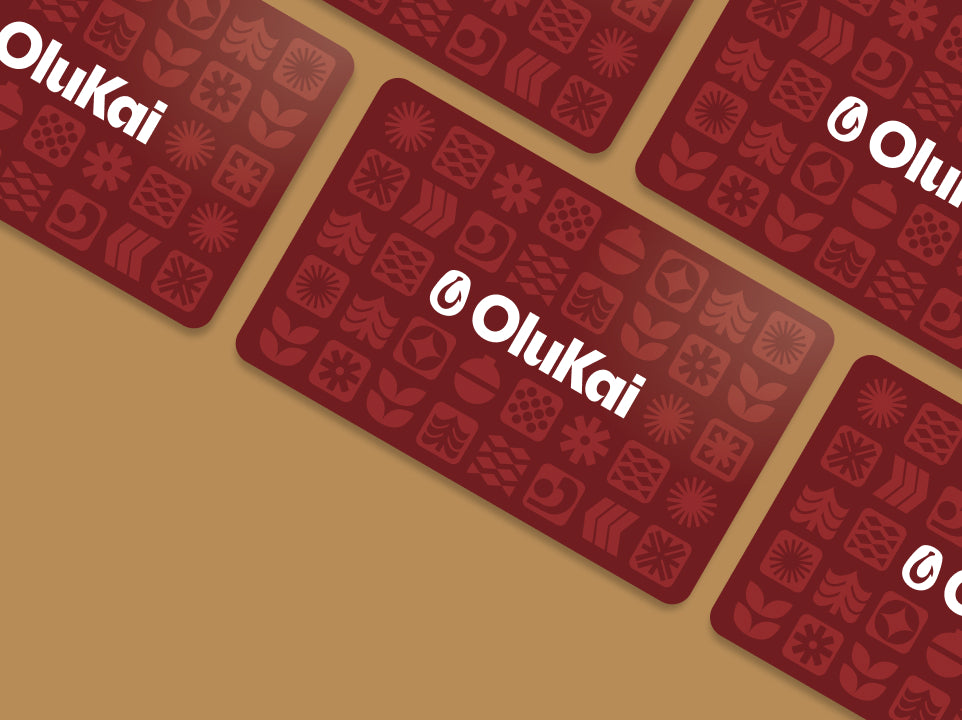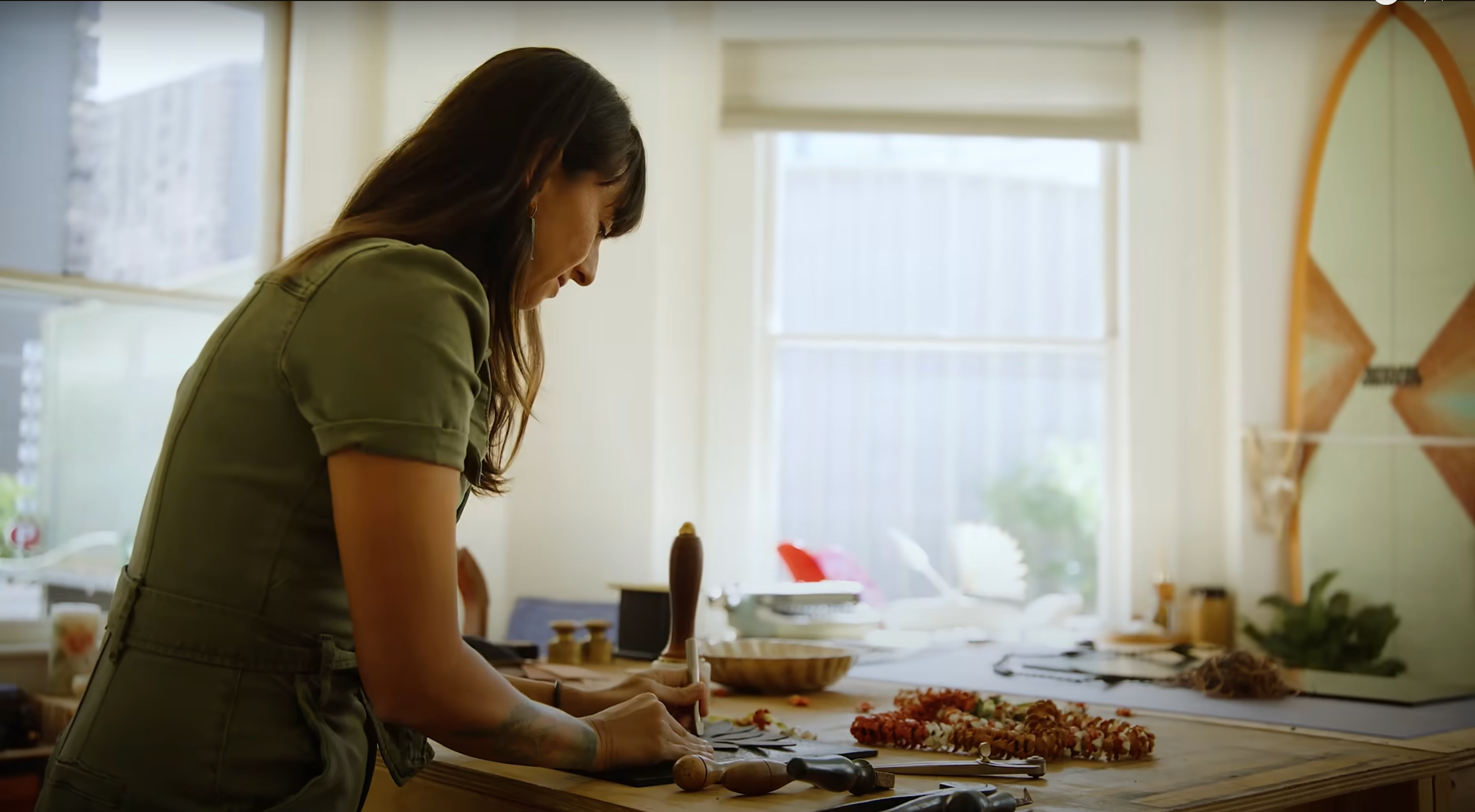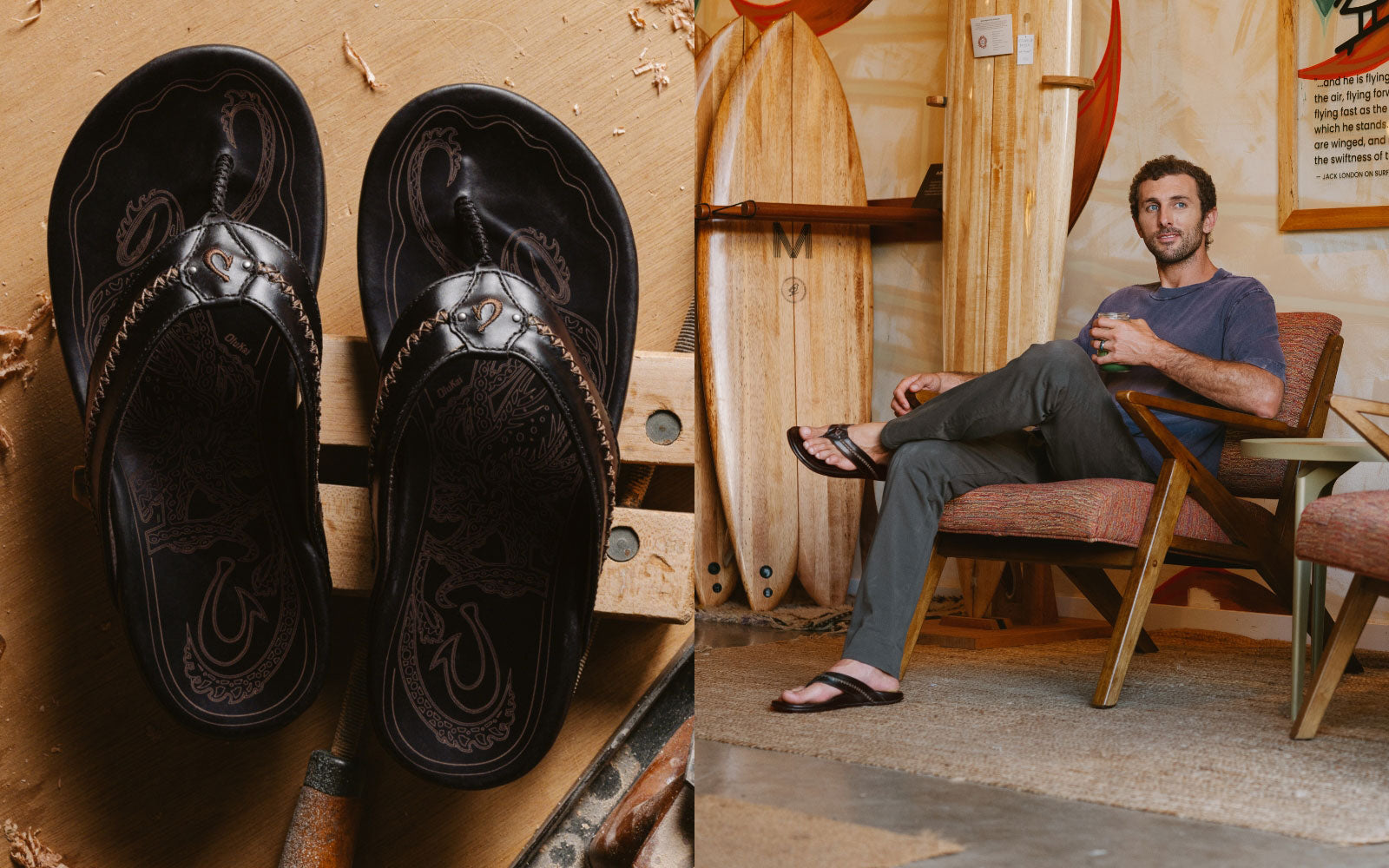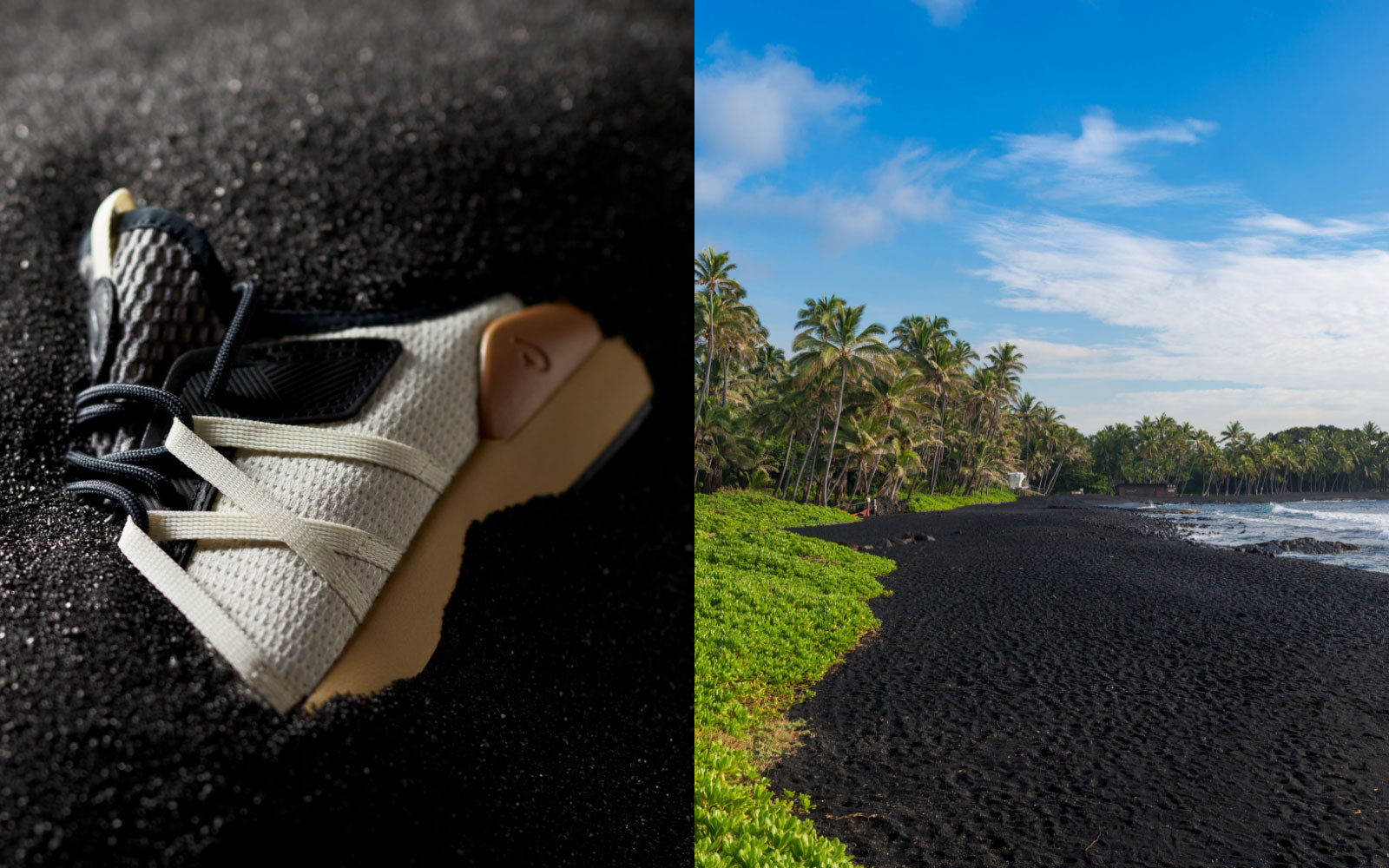The time-honored traditions of lauhala weaving serve as a profound inspiration for several of our products, most notably our men's Lae‘ahi Lauhala slipper, women’s Mi‘i slip-on, and Kāmola slide. In the Hawaiian language, "Lau" translates to "leaf," while "lau hala" specifically refers to the leaves of the Hala tree. Yet, the significance of this tree exceeds its leaves alone. Hawaiians harnessed the tree for various purposes, including its seeds to create paintbrushes and wood for constructing water pipes, posts, and calabashes. Additionally, the pollen of the sweet-smelling male Hala flower was used as a preservative for feathers and leis.
Shop OluKai Lauhala Collection

Across many Polynesian cultures, lauhala demonstrated its universal utility, being weaved into everyday items such as trays, baskets, shade hats, skirts, loincloths, ceremonial bracelets, and anklets. Notably, Polynesian voyagers, understanding the material's strength and resilience, harnessed lauhala for sails during their journeys across the vast open ocean.
Today, the art of weaving lauhala stands as an enduring tradition imbued with profound reverence and cultural significance. Weavers not only bear the responsibility of carrying forward the craft but also of paying homage to its rich heritage and preserving lauhala weaving traditions. Each weaver carries their own distinctive impression, creating a unique style that manifests in the choice of patterns, the shades of lauhala, and the meticulous details within the weaving process.
The process starts with the careful trimming of the lauhala's base, cutting a narrow tear along the leaf's edge, and removing the thorny edges of the leaf. Following this, a thorough cleaning occurs, with the lauhala wiped down to remove any dirt or potential insects. Next, the lauhala undergoes a cycle of flattening using a bamboo roller, one’s hand, or more contemporary specialized machines designed for the purpose of flattening. Once this phase is complete, the lauhala finds itself bundled within a kūkaʻa or rolled into a compact bundle, left undisturbed for a period ranging from a week to several months. This time-honored step serves to enhance the material's pliability and readiness for the weaving process. Finally, with the leaves now softened and prepared, they are ready to be cut and woven into the intricate patterns and designs we’ve come to know and love.

Although mastering the art of weaving lauhala requires a lot of time and dedication, a wealth of resources are available online. These encompass comprehensive video tutorials and techniques, informative guides with diverse patterns, and even classes facilitated by Kumu, who’ve gained knowledge over many years.
However, in the pursuit of crafting one's own lauhala creations, it is crucial to remain mindful of the profound significance and heritage inherent to this tradition. We've chosen to honor lauhala weaving by thoughtfully incorporating it into our men's Lae‘ahi Lauhala slipper, women's Mi‘i slip-on, and Kāmola slide as a sincere acknowledgment of this cherished practice.

